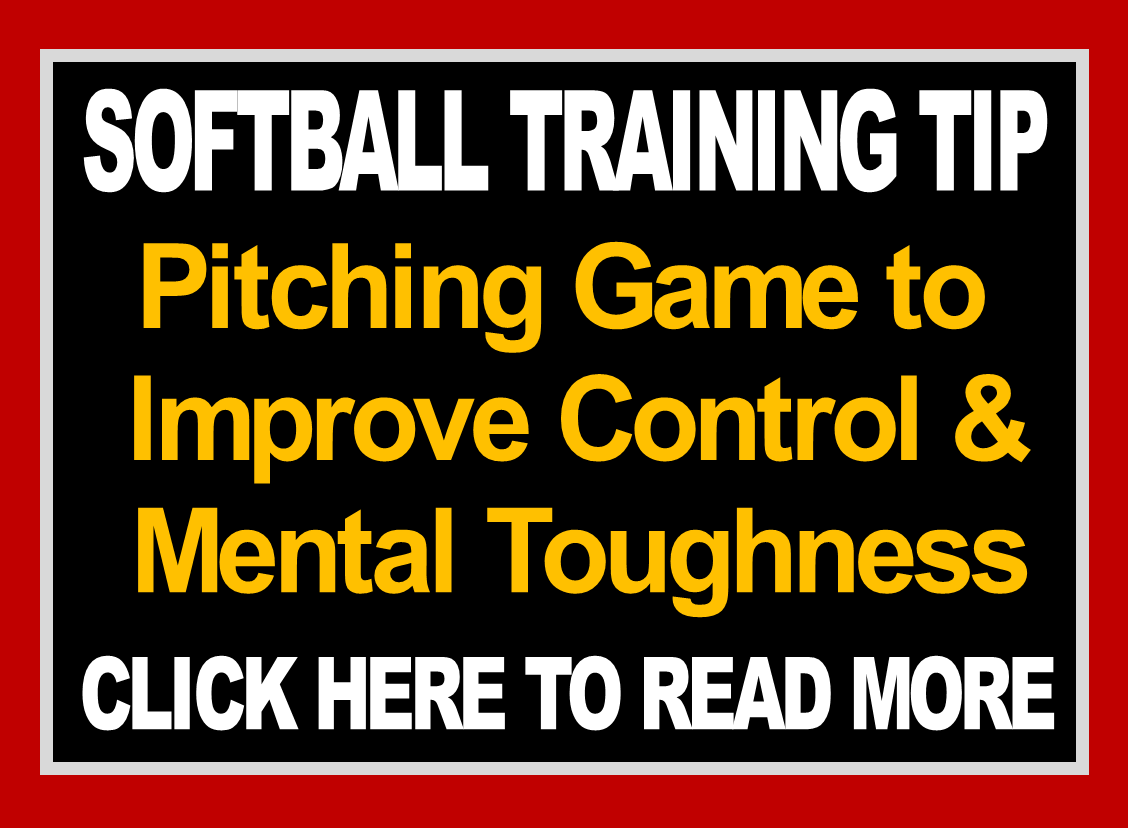
18 Oct Pitching Game to Improve Control & Mental Toughness

Most of us aren’t pitching coaches, so we may not feel confident working with our pitchers during practice.
If you’re looking for something to help your pitchers during practice, discover a great game/workout your pitchers can use during practice that is sure to translate to real-game success.
Pitching practice can quickly get mundane and boring, with pitchers constantly doing the same workouts over and over. When we don’t know a lot about pitching, knowing exactly workouts to do with our pitchers is tough, so let’s take a look at 6 main areas that pitchers should work on during practice:
- Improving their Mechanics
- Improving their Control (which includes pitch movement)
- Improving their Pitch Combinations
- Improving their Mental Toughness
- Improving their Physical Toughness
- Improving their Defense
While improving a pitcher’s Mechanics and Physical Toughness can be achieved through many of the items listed at the end of this article, it’s the Mental Toughness, Pitch Combinations, and Control Issues that I want to talk about now.
Mental Toughness, Pitch Combinations, and Control are all critical elements for a pitcher to be successful on any level and yet practicing them can often be difficult. Not every softball team is fortunate enough to have a qualified pitching coach on staff who can be there at every practice. Not only do pitching coaches help oversee pitching practice, but they can help design workouts to help pitchers improve in their weak areas, prepare for the next opponent, peak at the right time, avoid injury and stay mentally focused.
But what if you aren’t one of those teams? What if you don’t have a pitching coach on staff, or if you do have one on your staff your pitchers have their own pitching coaches, so for some bizarre reason they feel they don’t have to listen to yours? These are real issues that most teams encounter in softball, and yet, all of our pitchers practice doing something during practice, and that “something” is often the same routine over and over again. It usually goes something like this: pitchers start by getting close to their catchers and working on “spins”. Then they finally move back, and do more spins from a little farther away. They eventually work their way back to the pitching rubber only to go past it and do “walk-throughs” followed eventually by throwing their pitches. They’ll no doubt throw all of their pitches in large groups of 5-10 of each, or else focus completely on whatever pitch they’re obsessed with lately. They make sure they finish on a “good one” and then they’re finished practicing. Sound familiar?
While this might be a decent workout for the off-season when building pitches is important, it in no way helps a pitcher who is in-season. In-season workouts need to prepare the pitcher for games so they need to resemble game-like conditions:
- Pitch work (max. of 5 pitches for pitches that need work. Then mixing with another pitch that needs work in sets of 5 pitches each max)
- No more than 2 of the same pitch in a row when working on pitch mixing.
- Mixing locations (In with Out, Up with Down, Fast with Slow)
- No more “End on a Good One” as that’s not the case in games
- Ball or Strike consequence for pitches (NO arguing!)
- Mixing speeds
- Building endurance
- Mental Focus BEFORE the pitch instead of blank brain before and lots of thought and adjustment after the pitch. Start practicing to involve your brain with each pitch. Have your Brain tell your Hand what you want the pitch to do!
Fortunately, there is a pretty simple and fun game that pitchers can do during practice to work on these “In-Season” elements. It can be done at any skill level, whether you have a pitching coach or not.
The game is called First One to 10 and here’s how it works:
- The game involves a pitcher and a catcher, both with their gloves on and one ball per pair.
- The pitcher is playing against the catcher.
- Every pitch the pitcher makes will count as either a point for the Pitcher or a point for the Catcher based on the following:
- If the pitch is successful and a strike = +1 for the Pitcher
- If the pitch doesn’t work or is a ball = +1 for the Catcher
- The catcher is the umpire and her call is final! (NO arguing by the pitcher)
- The first one to 10 points wins
So let’s take a closer look at this game and how pitchers on three completely different skill levels would do it:
Advanced Pitcher – The Advanced Pitcher is any pitcher who has different pitches, that is pitches other than a fastball and changeup. In the Advanced version of this game the pitcher will throw all of her different pitches including the change up. The pitcher must first decide what order she’ll throw her different pitches in and then stick to this order until somebody gets to 10. The pitcher then throws 1 of each pitch at-a-time, in order, to her catcher. If the pitch she throws actually moves and is a strike then the pitcher gets +1 point. But, if the pitch doesn’t move or is a ball then the catcher gets +1. The pitcher only gets one shot to throw each pitch and keeps rotating her pitches in order until either the Pitcher or the Catcher gets 10 points and wins! Remember that the Change Up is a pitch so make sure it’s included in the pitch order!
This really forces pitchers to mix their different pitches, to mentally shake off a bad pitch and focus on the next one, and to really see which pitches they need to improve on or eliminate throwing until they get better.
Intermediate Pitcher – The Intermediate pitch has a fastball and a change up. The pitcher will alternate between fastball and change up on every pitch and simply figure out what one she’s going to start with. For every pitch that’s a strike it’s +1 for the pitcher and every pitch that’s a ball it’s +1 for the catcher.
For the intermediate pitcher this is a very challenging game because it forces them to throw their changeup and to make adjustments when they throw their fastball.
Beginning Pitcher – This is the pitcher with only a fastball. No pitcher is too young to try this game as it really helps turn practice into the pressures of a game. Every pitch that the pitcher throws for a strike is +1 for the pitcher and every pitch that’s a ball is +1 for the catcher. First one to 10 wins.
Just a word of caution with beginning pitchers – don’t make the strike zone too tight at first as this is a very hard game when they first play it. Catchers usually win the first few times since the pitcher is worried more about the score than pitching so help the younger pitcher have some success by expanding the zone at least a few times.
This game, while it might sound simple really forces pitchers to focus on their pitching instead of on the score or on the umpire’s call. The first time your pitchers do it don’t be surprised when the catcher wins – by a lot! While pitchers might be good on one or two of their pitches they usually aren’t real good on all of them so this game really exposes those weaker pitches. It also gives pitchers the chance to control their focus – they can either focus on the score or the last call they think should have been a strike, or else they can ignore that stuff and focus on the keys to making their next pitch a strike.
This game is a great way to help pitchers really improve their control for all of their pitches, including the change up and not just improve their best pitch.



